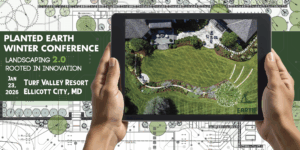By: Shannon Sullivan
One of the most important tasks in the world, pollination, relies on the work of bees, bumblebees, hummingbirds, bats, butterflies, and other insects. Pollinators are important to the reproductive success of over seventy-five percent of the world’s flowering plants and over 150 food crops in the United States including blueberries, apples, oranges, squash, tomatoes, and almonds. Protecting pollinators with economically feasible and environmentally sound horticulture practices by transforming your backyard into a bee-friendly garden with nutritious pollen and nectar-rich native plants can improve their survival conditions.

Pollination occurs when pollen grains from a flower’s male parts (anthers) are moved to the female part (stigma) of the same species. When the pollen grain moves down the style to the ovary, fertilization occurs, producing seeds. Most plants rely on pollinators to move pollen from one flower to another, while other plants depend on wind or water to move pollen. Plants produce nectar to attract pollinators, as the pollinators collect nectar, they are also moving pollen from flower to flower. A good pollinator is highly mobile, has hairs, scales, or feathers to carry the pollen grains and has specialized mouth parts for collecting nectar.
Worldwide there are more than 100,000 different animal species that pollinate plants. Insects are the most common. The most efficient insect is the honeybee. One out of every three bites of food come from honeybee pollination. There are over 20,000 bee species in the world, 4,000 are native to the United States and over 430 species of bees can be found in Maryland.

Common pollinators in Maryland; Ruby-throated hummingbirds are attracted to scarlet, orange, red or white tubular-shaped flowers like the Trumpet honeysuckle (Lonicera sempervirens). Honeybee/Bumblebees are attracted to bright white, yellow or blue flowers and flowers with contrasting ultraviolet patterns that have a fresh, pleasant odor like Meadow garlic (Allium canadense). Hover-flies are attracted to green, white or cream flowers like Narrowleaf Mountain Mint (Pycnanthemum tenuifolium). Monarch butterfly/butterflies are attracted to bright red and purple flowers with a fresh odor like Butterfly milkweed (Asclepias tuberosa). Hummingbird moth/moths are attracted to pale red, purple, pink or white flowers that emit a strong, sweet odor like Dense blazing star (Liatris spicata). Soldier beetle/beetles are attracted to white or green flowers with odors ranging from none to strongly fruity to foul like the American black elderberry (Sambucus canadensis) or Wild Ginger (Asarum canadense).
Pollinator populations are declining, the most probable causes include habitat loss, fragmentation due to construction, degradation of soil, the introduction and spread of invasive plant species, misuse of pesticides, and diseases and parasites carried to the United States on introduced plant species.

Pollinators depend on their natural surroundings for food and nesting sites. When planting a bee-friendly garden, it’s ideal to have blooms throughout the entire season. Choosing native plants to co-evolve with native pollinators will produce an opulent garden for maximum diversity providing a buffet of nectar and pollen.
Early blooming plants include black willow (Salix nigra), Canada serviceberry (Amelanchier canadensis), golden Alexanders (Zizia aurea), high bush blueberry (Vaccinium corymbosum) and wild columbine (Aquilegia canadensis).
Mid-season blooming plants are sweet pepperbush (Clethra alnifolia), swamp milkweed (Asclepoas incarnata), early goldenrod (Solidago juncea) and culver’s root (Veronicastrum virginicum).
Late-season plants include Canada goldenrod (Solidago canadensis), white meadowsweet (Spirea alba) and asters (Symphyotrichum spp.)

Additional Maryland native plants for hummingbirds, butterflies and bees include Bee Balm (Monarda didyma), Boneset (Eupatorium perfoliatum), Cardinal flower (Lobelia cardinalis), Coral Bells (Heuchera sanguinea), Evening primrose (Oenothera biennis), Ironweed (Vernonia altissima), Joe-pye Weed (Eupatorium purpureum), and Virginia bluebells (Mertensia virginica).
Other factors to consider when establishing a bee-friendly garden; it’s best to plant in clusters rather than single plants to attract pollinators. Maintain a healthy habitat with old stumps, dead flower stalks, and brush for nesting bees/insects or consider building a Mason bee house. Provide a water source, a bird bath with some stones will allow bees/insects to drink without drowning. Avoid using pesticides, if pesticides need to be used apply properly and limit application spread.
One of the most exciting things about gardening is every year you have the opportunity to experiment with plants. Incorporating vegetables, fruits, herbs and trees will enhance your bee-friendly garden and have flowers blooming from early spring to late fall. This will keep pollinators healthy and well fed while visiting your backyard.




